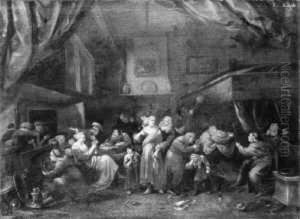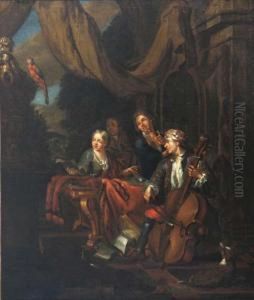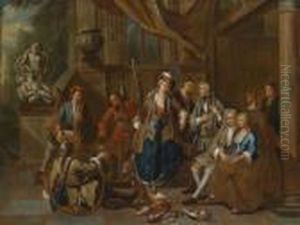Ignace Van Der Becken Paintings
Ignace Van Der Becken was a notable Flemish artist, born in the year 1620 in the city of Ghent, which was then part of the Spanish Netherlands. His life and career were deeply embedded in the rich artistic traditions of the Flemish Baroque period, a time when the region was renowned for its significant contributions to the development of European art. Van Der Becken's work is particularly celebrated for its intricate detail, vibrant colors, and dynamic compositions, characteristics that have cemented his reputation as an important figure in the history of Flemish painting.
Van Der Becken's artistic journey began in his hometown of Ghent, where he was apprenticed to a local master. This early phase of his career was crucial in shaping his technique and artistic vision. By the time he had completed his apprenticeship, Van Der Becken had developed a distinctive style that blended the realism and precision of Northern Renaissance art with the dramatic intensity and emotional depth of the Baroque. This unique combination of influences allowed him to create works that were both visually striking and deeply expressive.
Throughout his career, Van Der Becken enjoyed the patronage of the Catholic Church as well as various noble families, who commissioned him to create altarpieces, portraits, and historical scenes. His religious works are particularly noted for their spiritual intensity and attention to detail, features that made them highly sought after for churches and cathedrals across the Flemish region. Meanwhile, his portraits and historical paintings reveal a keen insight into character and a dynamic approach to composition, qualities that have led to their continued admiration and study.
Despite his success, detailed records of Van Der Becken's life remain somewhat scarce, and much of what is known about him comes from the analysis of his surviving works and contemporary accounts. He is believed to have spent the majority of his career in Ghent, contributing significantly to the artistic life of the city. Van Der Becken passed away in 1689, leaving behind a legacy that has continued to influence Flemish art. His works are preserved in several major museums and collections, where they continue to be celebrated for their beauty, technical skill, and historical significance.


